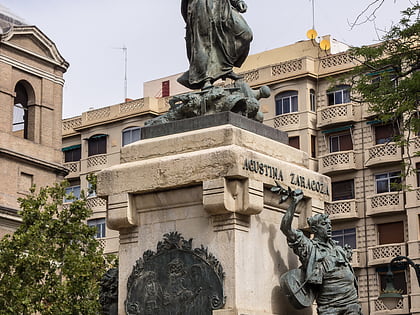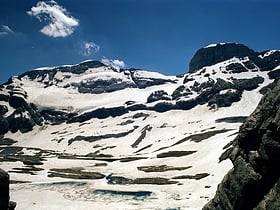Region Aragon
Discover the cities and interesting locations in the region that will enchant you with their rich history, cultural heritage, or picturesque surroundings.















Nestled in the northeastern part of Spain, the Autonomous Community of Aragon is a region steeped in history, culture, and natural beauty. Known for its rugged landscapes, medieval villages, and rich architectural heritage, Aragon offers a distinct experience that sets it apart from the more frequented Spanish destinations.
Zaragoza, the capital of Aragon, is an epicenter of historical significance and modern vitality. The city is home to the stunning Basilica of Our Lady of the Pillar, a Baroque masterpiece and a pilgrimage site for many Catholics. Visitors should not miss the Aljafería Palace, an 11th-century Islamic fortress that stands as a testament to the region's Moorish past.
The province of Huesca presents the awe-inspiring Ordesa y Monte Perdido National Park, a UNESCO World Heritage Site. Here, adventurers and nature lovers can explore the glacial valleys, towering peaks, and diverse flora and fauna. For winter sports enthusiasts, the Aragonese Pyrenees offer some of the best ski resorts in Spain, such as Formigal and Candanchú.
Aragon's history is palpable in the preserved medieval towns like Alquézar and Aínsa, where time seems to have stood still. These towns are characterized by cobbled streets, ancient stone houses, and imposing castles that overlook the scenic countryside.
The region is also celebrated for its unique gastronomy, influenced by the diverse cultures that have inhabited the area. Traditional dishes such as "ternasco" (roast lamb) and "borrajas" (borage vegetable stew) are a must-try, often paired with the renowned Somontano wines that are produced in the foothills of the Pyrenees.
Moreover, Aragon is dotted with Mudejar architecture, a style that blends Islamic and Christian design elements, recognized by UNESCO as a World Heritage. The town of Teruel, in particular, is famous for its Mudejar towers and the Mausoleum of the Lovers, an enduring symbol of tragic romance akin to Romeo and Juliet.
Cultural festivities abound in Aragon, with the annual Holy Week celebrations in Zaragoza being among the most dramatic and emotional in Spain. The region's folk music and dances, such as the jota, continue to thrive, keeping the Aragonese spirit alive.
Must-Visit Places and Tourist Attractions

Medieval Islamic palace/Parliament seat
 Museum
Museum 
 Plaza de Toros de Zaragoza
Plaza de Toros de Zaragoza  Monasterio de Piedra
Monasterio de Piedra Polished hotel in a 1200s monastery
 Cathedral of the Savior of Zaragoza
Cathedral of the Savior of Zaragoza Grand cathedral with medieval tapestries
 Aneto
Aneto  Tarazona Cathedral
Tarazona Cathedral  Motorland Aragón
Motorland Aragón  Huesca Cathedral
Huesca Cathedral  Aigualluts
Aigualluts  Albarracín Cathedral
Albarracín Cathedral  Veruela Abbey
Veruela Abbey  Monument to Agustina de Aragón
Monument to Agustina de Aragón  Santa María de Santa Cruz de la Serós
Santa María de Santa Cruz de la Serós  Jaca Cathedral
Jaca Cathedral  Rueda Abbey
Rueda Abbey 
 Museo Goya
Museo Goya  Puente de Piedra
Puente de Piedra Stone bridge spanning the Ebro River






